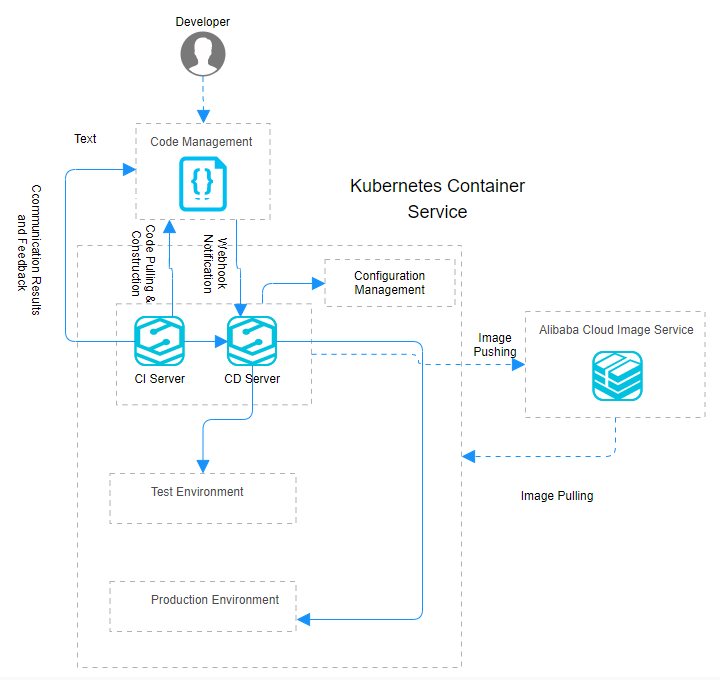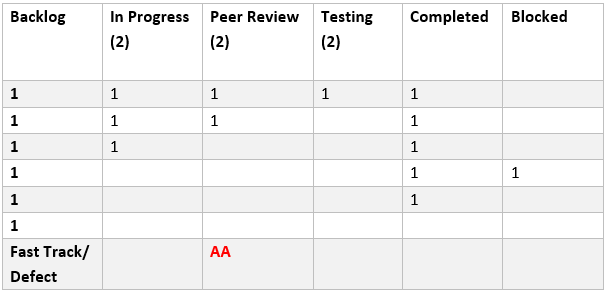By Shantanu Kaushik
We have already discussed the DevOps methodology using Alibaba Cloud in our previous posts, DevOps for the Cloud Part 1 and Part 2. Now, let's talk about the best practices of DevOps testing using Alibaba Cloud.
Testing methodologies have been an integral part of development in the software industry, however, DevOps testing scenarios are much different from traditional software testing practices. DevOps testing has to be strategized first before you decide to go ahead with it. A successful testing strategy aims to churn out builds at a faster pace. The total process of building, testing, and releasing software has to be the most important bit behind a successful DevOps testing strategy.
This is the very first step to defining a pipeline that is suitable for your software delivery. From new application software to software already in place with traditional delivery models, defining a DevOps testing strategy will enable a faster channel for development, delivery, and updates. This will further enhance business productivity. If you are upgrading your delivery pipeline from a traditional approach, this will also take care of any bottlenecks you may have faced previously.
Attaining successful deployment and maintaining it for all the releases or sub-releases of your software is an essential practice. Alibaba Cloud DevOps solutions integrate its testing environment within the CI/CD practices. Let's see how it works using the diagram below:

Kanban boards can help you look at your deployment stages in a more graphical format. It visualizes the data stream into usable workflow diagrams and lays out the complete delivery process in a visual format. Alibaba Cloud supports Kanban. You can easily incorporate it for a better understanding of what is happening with your current strategy and make an informed decision about any required changes to overcome a performance bottleneck or any other issue with the process. Below, there is a similar representation of a near-identical Kanban layout.
Visual Representation of Kanban

Kanban increases the overall workflow since it highlights each step with a visual representation. You can easily make out any bottlenecks or other issues that may be affecting the performance of your total delivery process. Different teams working within the cycle can collaborate using Kanban to help achieve a better DevOps workflow.
Just a quick reminder – Alibaba Cloud Academy offers excellent courses for you to master DevOps and follow a better learning path. Be sure to check it out if you're interested!
DevOps is all about collaboration and teamwork. The best results come after the best utilization of resources. Define and assemble your teams with priorities and ways to be in sync in mind. Let's discuss some of the most important and best practices to follow while testing.
Continuous Integration (CI) is implemented to share the updated code. Let's assume that there are multiple iterations of your application coming in and they are being fed to the repository using CI. This can be a challenge and needs to be properly addressed. Here comes the need of automation while testing. Inserting an automated testing scenario here will reduce risks that continuous integration without automatic testing possesses. Make sure to automate tasks that require automation or the ones that may not require much human intervention. Introducing Quality Assurance (QA) into the mix is a good idea.
Alibaba Cloud DevOps CI methodology suggests that testing should be automated to achieve and fix machine errors and other issues. Although, when it comes to checking for release readiness and usability or user operations, testing should be kept on the human side.
When it comes to Quality Assurance (QA), you need to consider using all aspects of DevOps. Development, integration, testing, and deployment, every aspect should be carefully separated and checked for issues that users might face.
After achieving maturity in your automation practices, the whole approach towards DevOps automated cycles will grow from just a collection of errors and their respective solution to a pan-system data analysis that will present a layout with the worst clogs in your system. It will also outline the best working modules within your system.
Documentation is another key aspect to follow when you need to improve your software development lifecycle (SDLC.) Alibaba Cloud DevOps solutions come with documentation and provide key metrics to follow. When you build over an infrastructure and present your applications to the world, you need to come up with documentation that all teams or personnel can use while operations are underway. This will provide critical insights to the teams and will help anybody who acclaims their spot on your team to better understand and provide solutions based on the already documented work.
Gathering viable test data proves to be another vital component when it comes to DevOps testing practices. Centralized QA data can provide a better understanding of module viability and effectiveness. This can produce an overview of your testing practice across the delivery pipeline. In case your tests are failing or taking longer execution times, this particular module can be marked for review.
This documentation must include all of the changes and why they were made. The three important things to document with your test data are success/failure listings, how it succeeded/failed, and what steps were taken to fix the failures. Differences in delivery or performance, testing times, and data are some of the key metrics in these situations.
Another shift that is gaining momentum is continuous testing. Organizations can use this approach to utilize and maintain different streams and stages of testing to dedicated ones within the continuous integration and delivery pipeline. This is an approach to automate end-to-end functional testing or integrate test teams where automation isn't an option.
This is a way to allocate the testing budgets and testing to meet the demand. This can also help control or regulate the release frequency of your software iterations. Continuous testing leads to an error-free environment and takes care of situations that might arise due to human error.
The Alibaba Cloud DevOps model suggests continuous integration and testing practices to the level where almost every module in the cycle is either automated or the user can use a testing automation tool to achieve an error-free cycle.
By automating DevOps testing, you can achieve a better and effective system of build, integration, release, and delivery. From the developer's code bench to user experience, the whole cycle has to go through an automated testing cycle to ensure a smoother and better pipeline. This will ensure a high-performance structure and a better, more agile business model.
The views expressed herein are for reference only and don't necessarily represent the official views of Alibaba Cloud.

2,599 posts | 765 followers
FollowAlibaba Clouder - September 9, 2020
Alibaba Clouder - April 20, 2017
Alibaba Clouder - June 10, 2020
Alibaba Clouder - November 18, 2020
Alibaba Clouder - July 24, 2018
Alibaba Clouder - October 28, 2020

2,599 posts | 765 followers
Follow DevOps Solution
DevOps Solution
Accelerate software development and delivery by integrating DevOps with the cloud
Learn More Alibaba Cloud Flow
Alibaba Cloud Flow
An enterprise-level continuous delivery tool.
Learn More Container Service for Kubernetes
Container Service for Kubernetes
Alibaba Cloud Container Service for Kubernetes is a fully managed cloud container management service that supports native Kubernetes and integrates with other Alibaba Cloud products.
Learn More Function Compute
Function Compute
Alibaba Cloud Function Compute is a fully-managed event-driven compute service. It allows you to focus on writing and uploading code without the need to manage infrastructure such as servers.
Learn MoreMore Posts by Alibaba Clouder